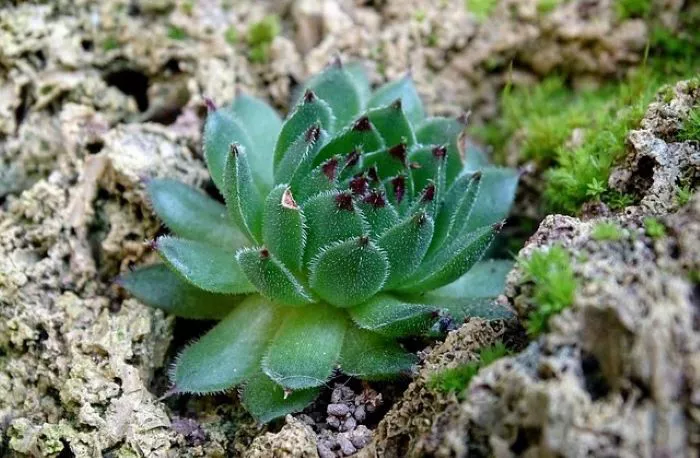Succulents are popular plants known for their ability to thrive in dry conditions. Their unique adaptations allow them to store water in their leaves, stems, and roots. Many people enjoy growing succulents outdoors due to their diverse shapes, colors, and low maintenance requirements. However, keeping succulents alive outdoors requires understanding their specific needs. This article will provide a comprehensive guide on how to care for outdoor succulents, focusing on sunlight, watering, soil, temperature, and pest management.
Understanding Succulent Needs
Succulents are native to arid regions, where they have adapted to survive in harsh conditions. They thrive in environments with well-draining soil and plenty of sunlight. However, outdoor conditions can vary greatly depending on the climate and location. Understanding the specific needs of your succulents is crucial for their survival and growth.
Choosing the Right Location
Selecting the right location for outdoor succulents is essential. Most succulents prefer full sunlight, which means they need at least six hours of direct sunlight each day. However, some succulents can tolerate partial shade, especially in extremely hot climates. It is important to observe the sunlight patterns in your garden or patio to find the best spot for your plants.
When planting succulents outdoors, consider the following factors:
Sun Exposure: Choose a location that receives adequate sunlight. Morning sun is often less intense than afternoon sun, making it ideal for some succulents. If you live in a particularly hot area, providing some afternoon shade can help prevent sunburn.
Wind Protection: Succulents can be sensitive to strong winds. If possible, plant them in a sheltered area or use windbreaks to protect them from harsh gusts.
Drainage: Ensure that the chosen location has good drainage. Avoid low spots where water may pool after heavy rain. Succulents prefer to be planted in raised areas or on slopes to promote drainage.
Watering Outdoor Succulents
Watering is one of the most critical aspects of succulent care. While succulents are drought-tolerant, they still need water to survive. The key is to water them correctly to avoid overwatering or underwatering.
Watering Frequency: The frequency of watering depends on the climate and season. During the growing season (spring and summer), succulents may need to be watered every two to three weeks. In cooler months, reduce watering to once a month or less.
Soil Check: Before watering, check the soil moisture. Stick your finger into the soil about an inch deep. If it feels dry, it is time to water. If it is still moist, wait a few more days before checking again.
Deep Watering: When you water, do so thoroughly. Water the soil until it drains out of the bottom of the pot or through the drainage holes. This method encourages deep root growth and helps the plant access moisture.
Avoid Watering at Night: Watering in the evening can lead to excess moisture on the leaves overnight, increasing the risk of rot. It is best to water succulents in the morning or early afternoon.
Soil Requirements
The right soil is crucial for outdoor succulents. They need well-draining soil that prevents water from accumulating around the roots. Here are some tips for choosing the right soil:
Cactus Mix: Use a commercial cactus or succulent mix designed for drainage. These mixes typically contain a blend of potting soil, sand, and perlite or pumice.
Homemade Mix: If you prefer to create your own mix, combine equal parts potting soil, coarse sand, and perlite or pumice. This combination will provide excellent drainage and aeration.
Mulching: Adding a layer of gravel or small stones on top of the soil can help retain moisture while preventing weeds. It also enhances drainage and keeps the soil temperature stable.
Temperature Considerations
Succulents are generally tolerant of temperature fluctuations. However, extreme temperatures can be detrimental to their health. Most succulents prefer temperatures between 60°F and 80°F. Here are some tips for managing temperature:
Protecting from Frost: If you live in an area with cold winters, protect your succulents from frost. You can bring them indoors during freezing temperatures or cover them with frost cloths.
Heat Management: In extremely hot climates, provide some shade during the hottest part of the day. This can prevent sunburn and dehydration.
Acclimation: If you are moving succulents from indoors to outdoors, acclimate them gradually. Start by placing them in a shaded area for a few days before exposing them to full sunlight.
Pest Management
Outdoor succulents can be susceptible to pests such as aphids, mealybugs, and spider mites. Regular monitoring and preventive measures can help keep your plants healthy.
Regular Inspection: Check your succulents regularly for signs of pests. Look for discolored leaves, webbing, or sticky residue.
Natural Remedies: If you notice pests, you can use natural remedies such as neem oil or insecticidal soap. These treatments are effective and less harmful to the environment.
Encouraging Beneficial Insects: Attract beneficial insects such as ladybugs and lacewings to your garden. These insects can help control pest populations naturally.
Cleaning: Occasionally, gently wash the leaves with water to remove dust and any potential pests. This practice helps keep your plants healthy and vibrant.
Conclusion
Keeping succulents alive outdoors requires attention to their specific needs. By choosing the right location, providing adequate sunlight, managing watering, and ensuring proper soil conditions, you can create a thriving environment for your succulents. Additionally, understanding temperature considerations and implementing pest management strategies will help protect your plants from potential threats. With proper care and attention, your outdoor succulents can flourish, bringing beauty and resilience to your garden for years to come.


